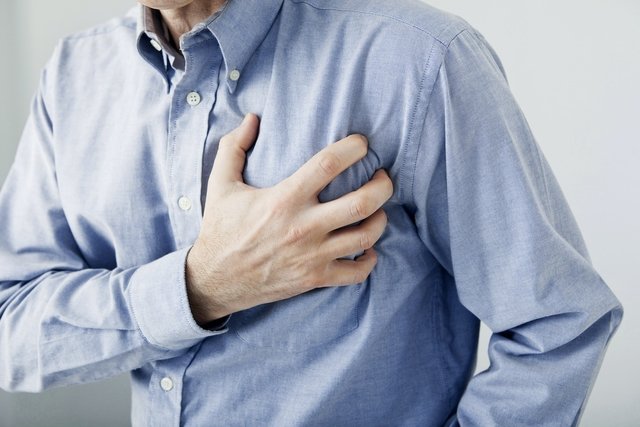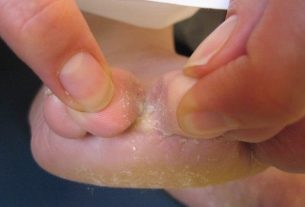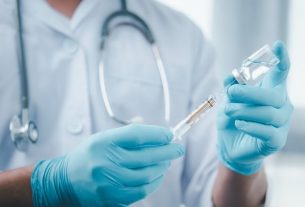Acute myocardial infarction (AMI) is the sudden decrease or interruption of the flow of blood to the heart, generally caused by the accumulation of fatty plaques within the coronary arteries or by the formation of clots. This causes a lack of oxygen and death of heart tissue, and the appearance of symptoms such as pain on the left side of the chest, which can radiate to the shoulder, neck, face or left arm, for example.
AMI, also known as a heart attack or heart attack, is most often caused by unhealthy lifestyle habits, such as a diet high in fat and cholesterol and low in fruits and vegetables, a sedentary lifestyle or smoking. Furthermore, some factors can increase the risk of AMI, such as diabetes, high blood pressure or obesity.
In the presence of symptoms of AMI, you should seek the nearest hospital or emergency room immediately, so that treatment can be diagnosed and started, which aims to unblock the artery and improve blood circulation to the heart, avoiding complications. that can put lives at risk.
Watch the following video and understand better about acute myocardial infarction:
Symptoms of acute myocardial infarction
The main symptoms of acute myocardial infarction are:
- Pain on the left side of the chest, in the form of tightness in the heart;
- Chest pain that radiates to the armpit, left arm, shoulder, face or back;
- Feeling of heaviness, discomfort or burning in the stomach, not related to food;
- Nausea;
- Cold sweat and paleness;
- Feeling of tightness in the throat or suffocation;
- Accelerated heart;
- Difficulty breathing, rapid breathing or shortness of breath;
- Weakness or tiredness;
- General malaise;
- Anxiety.
Furthermore, some studies show that some symptoms, such as excessive sweating or pain in the left and right arms, are more common in men, while in women the symptoms of acute myocardial infarction, more common are abdominal pain, dizziness or sensation of weight in the arms, often without feeling the pain in the chest. In the elderly, the most common symptom is shortness of breath. Know how to identify the symptoms of a heart attack in women.
It is important to seek the emergency room or the nearest hospital immediately, or call SAMU, whenever symptoms of AMI appear, as a heart attack can result in loss of consciousness, as there is a decrease in blood supply to the brain. See how to identify a heart attack.
Furthermore, in the event of a heart attack with loss of consciousness, the ideal is to know how to perform a cardiac massage while waiting for SAMU to arrive, as this increases the person’s chances of survival.
How to confirm the diagnosis
The diagnosis of AMI is made by the cardiologist at the hospital through the evaluation of symptoms, physical examination and examination such as the electrocardiogram, which is one of the main diagnostic criteria for heart attack. The electrocardiogram, also known as ECG, is an exam that aims to evaluate the electrical activity of the heart, making it possible to check the rhythm and frequency of the heart’s beats. Understand what an ECG is and how it is done.
To diagnose a heart attack, the doctor must also order laboratory tests with the aim of detecting the presence of cardiac biochemical markers, such as levels of creatine kinase (CK-MB), myoglobin, troponin, which have their concentration increased in situations of heart attack. Through the results of these tests, the cardiologist can identify when the heart attack occurred based on the levels of markers in the blood.
In addition, the doctor must order other tests such as a complete blood count, lipid profile, kidney function tests, metabolic panel, echocardiogram or cardiac angiography. See how cardiac angiography is performed.
Make an appointment with your nearest cardiologist to assess your risk of acute myocardial infarction:
Taking care of your health has never been easier!
Possible causes
Acute myocardial infarction is caused by a decrease or interruption of blood flow in the coronary arteries, which are responsible for delivering oxygen to heart cells, resulting in cardiac ischemia, which is a lack of oxygen in the heart muscle, which leads to death. of heart muscle tissue.
This decrease or interruption of blood flow is generally caused by an accumulation of fat inside the blood vessels, in the form of plaques, which can make it difficult for blood to flow to the heart, or even become loose and stimulate the formation of clots inside the coronary arteries. and thus cause a heart attack.
Some factors may contribute to increasing the risk of acute myocardial infarction, such as:
- Family history of heart attack;
- High cholesterol and/or triglycerides;
- Obesity;
- Smoking habit;
- Sedentary lifestyle;
- Diet rich in fat and low in fiber, fruits and vegetables;
- High pressure;
- Diabetes;
- Peripheral vascular disease;
- Coronary diseases;
- Congenital changes in the coronary arteries;
- Elevated homocysteine levels.
Furthermore, AMI can occur due to excessive consumption of alcoholic beverages or use of drugs of abuse, such as cocaine or marijuana, for example. Learn about other causes of acute myocardial infarction.
How the treatment is carried out
The treatment of acute myocardial infarction is carried out by a cardiologist in a hospital environment, starting with a dose of acetylsalicylic acid, serum applied directly to the vein and oxygen therapy.
In addition, your doctor may prescribe opioid medications to help relieve pain, and nitroglycerin to increase the dilation of blood vessels, facilitating the flow of oxygen to the heart.
In addition, the doctor must use antiplatelet medications, such as heparin or ticagrelor, for example, before carrying out the treatment, which involves unblocking the affected blood vessel, through angioplasty or through surgery called a saphenous bypass, also known as per bypass cardiac or myocardial revascularization. See more about the saphenous bypass.
Furthermore, before discharge from the hospital, the doctor may recommend the use of home remedies, such as acetylsalicylic acid, statins to reduce cholesterol, and/or medicines to control blood pressure. Find out more about heart attack treatment.
How to prevent
To prevent a heart attack, it is important that a person has healthy lifestyle habits, such as:
- Practice physical exercise regularly, recommended by your doctor;
- Eat a healthy diet, with guidance from a nutritionist;
- Quit smoking;
- Avoid consuming alcoholic beverages;
- Maintain a healthy weight.
Furthermore, it is important to take treatment with medications recommended by your doctor for high blood pressure, diabetes or high cholesterol and triglycerides, and a healthy diet, to lower cholesterol and avoid acute myocardial infarction. See what to eat to lower cholesterol.

Sign up for our newsletter and stay up to date with exclusive news
that can transform your routine!
Warning: Undefined array key "title" in /home/storelat/public_html/wp-content/plugins/link-whisper-premium/templates/frontend/related-posts.php on line 12
Warning: Undefined array key "title_tag" in /home/storelat/public_html/wp-content/plugins/link-whisper-premium/templates/frontend/related-posts.php on line 13




